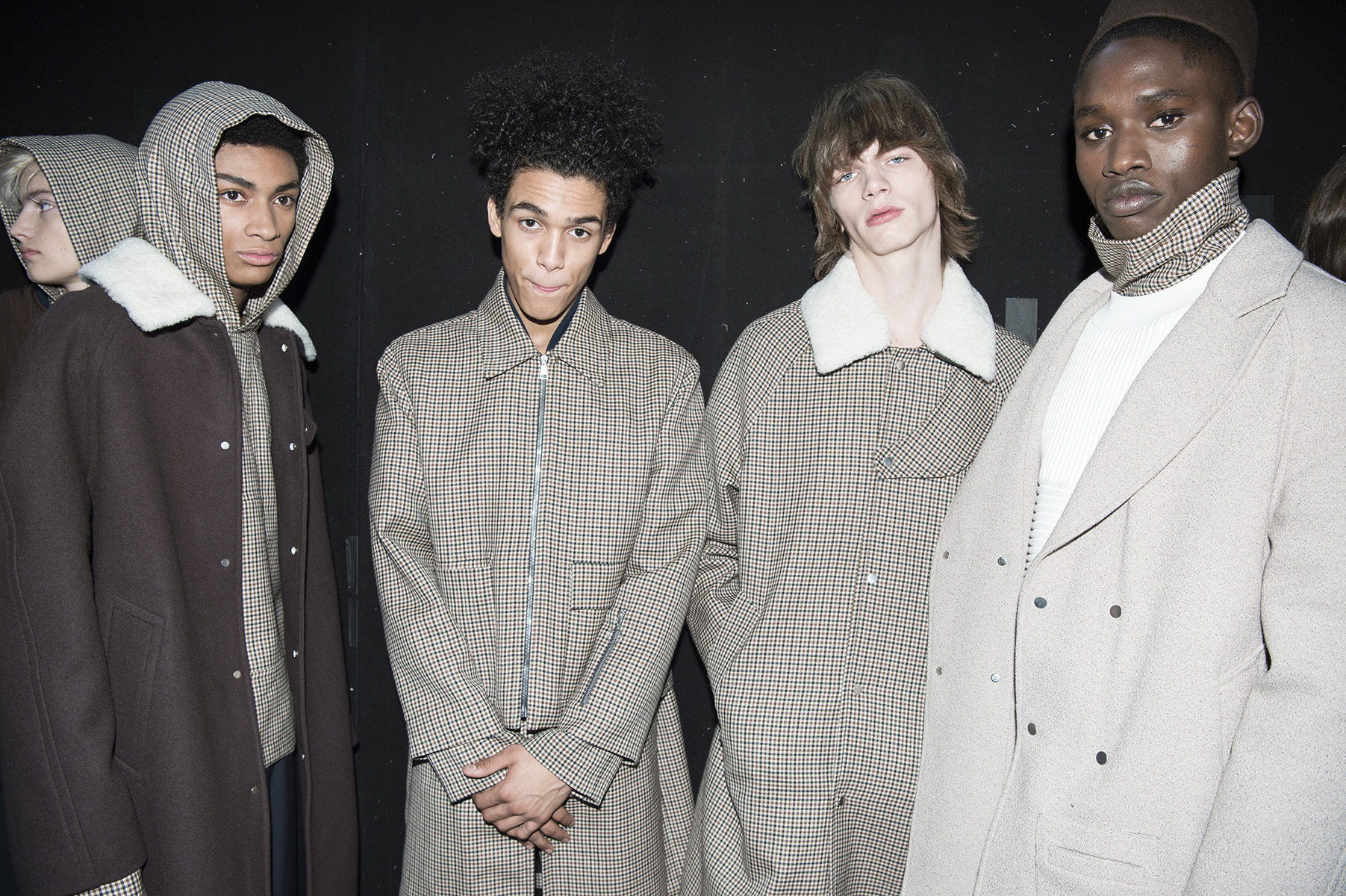With all the doomsday vibes the fashion industry is currently facing for its frenetic pace, at least the six-month collection cycle gives overworked designers a chance to reflect and respond. On the second day of the fall/winter 16 men’s shows, the message in London was clear: the designers are not going down without a fight. It was a spirit reflected in the many military surplus elements used throughout Saturday’s collections. There were symbols of armies and war, but also symbols of protection and, inevitably, of peace. Far beyond the borders of the fashion industry, however, the army components represented a world where current uncertainties for the future have spawned a spirit of radicalism, especially in Europe, where activist and reactionary groups are fighting for the political future of the continent.
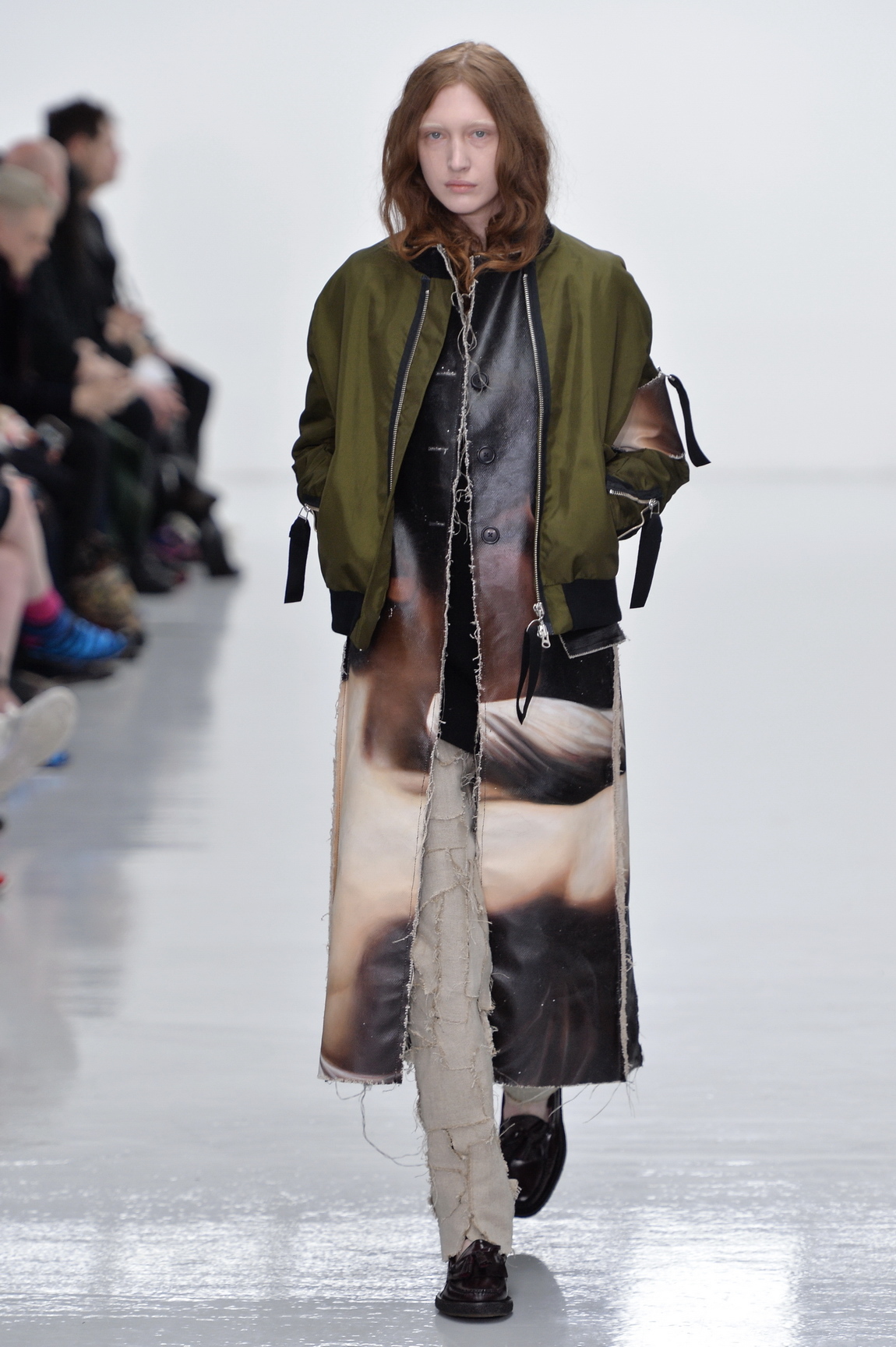
Matthew Miller introduced a new sense of elegance to his work in plenty of tailoring, as well as luxe and sumptuous materials that already announced their season takeover on the first day of London shows. But Miller presented them with strict belted waists, bomber jackets, and tattered armbands stripped of insignia, prompting the question what exactly they represented. Knowing Miller’s political point of departure, it was safe to say it wasn’t the border police. “It can be a sign of rebellion—it depends what context you put it in,” he explained. “It can be military police, but a lot of the time if you’re militia, you wear an armband as well. There are different references but mine is definitely more militia.” Jackets beautifully covered in motifs of Caravaggio paintings were a tribute to the controversial 16th century artist, who “didn’t give a fuck.”
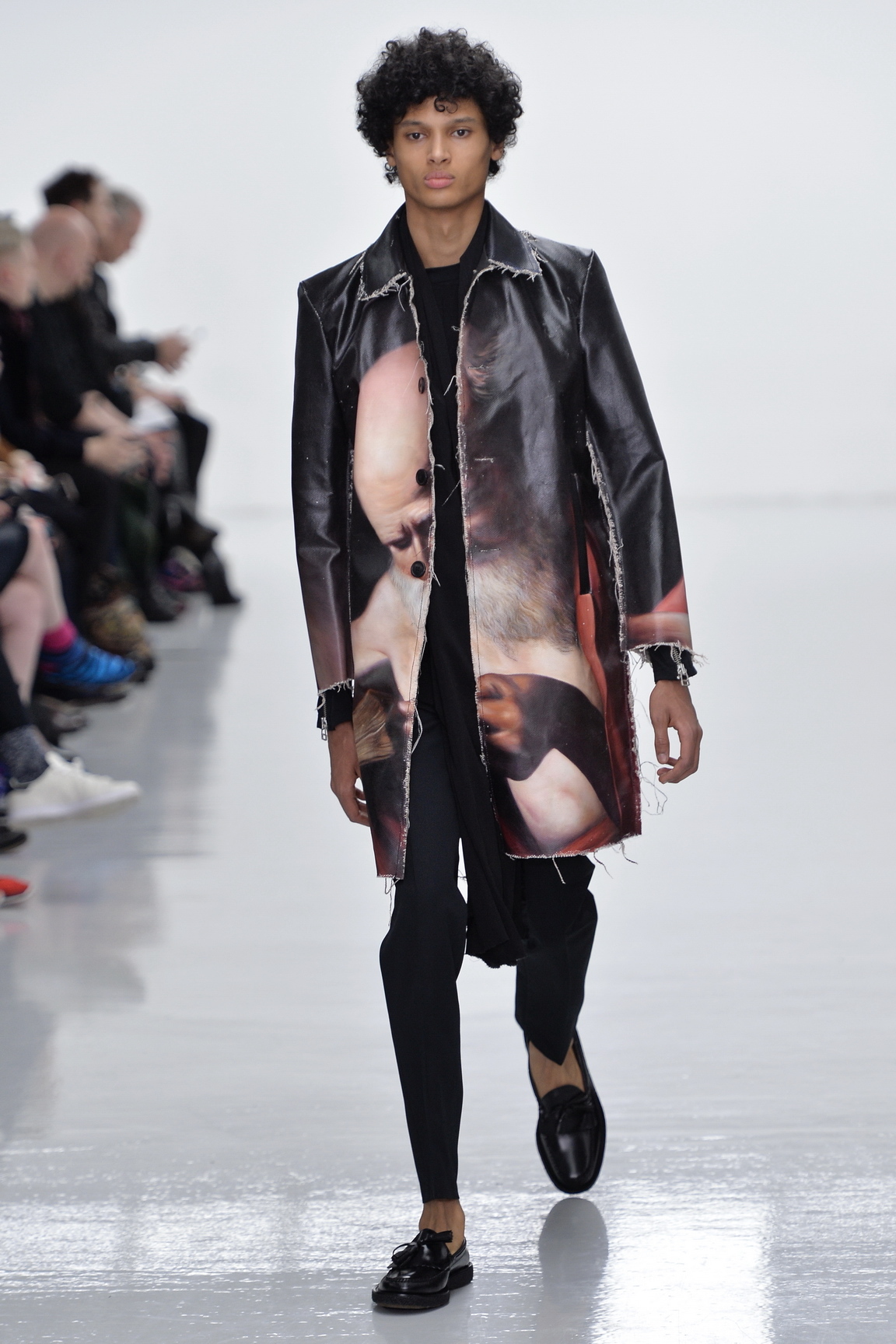
“He got thrown out of his own country and sent into exile. He was a gambler, a drinker, a murderer, and he died really young,” Miller said. “The way you feel is the way you express yourself. You can’t hide it.” For the designer, the powerful references acted as symbols of his own self-honesty and willingness to communicate more through his work — no, make that way more — than simply dressing people. While his collection didn’t represent a spelled-out political statement, it was an appeal for people to take action—globally and locally.
At Casely-Hayford, super long coats played with the deconstruction of gala military uniforms. They were joined by tribal-esque prints and army patches on outerwear, the whole thing suddenly interrupted by gaudy, golden bullion embroidered military decorations, which seemed to suggest a re-appropriation of values. Surely they were too bling and fun to represent war?
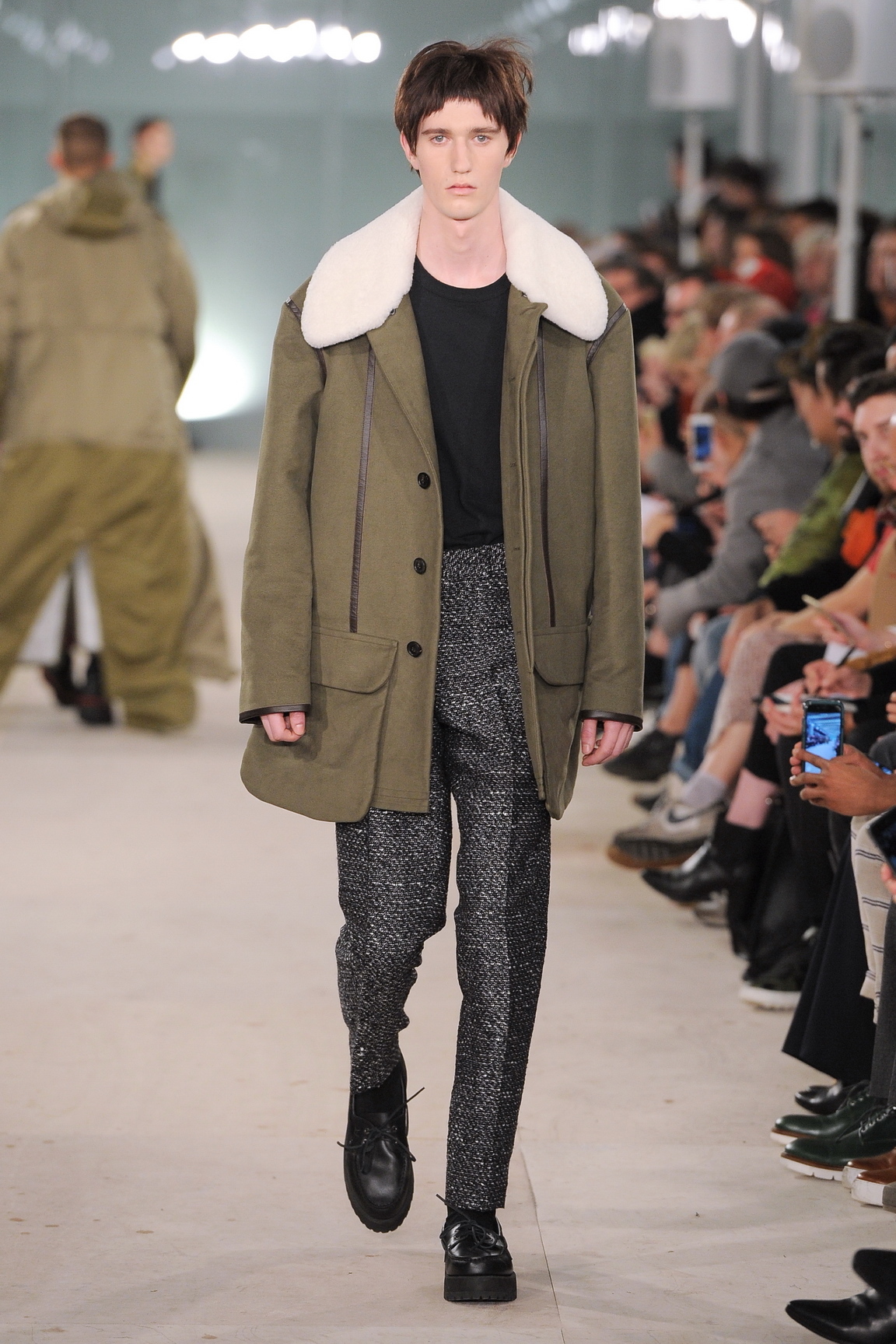
At the women’s shows in September and October, Valentino and Haider Ackermann both addressed the refugee crisis currently challenging Europe when commenting on their collections, which represented ideas of international fellowship. Three months on, Lou Dalton did it her way. Her collection was rooted in the Shetland Islands and the Shetland Bus, an underground operations group that helped rescue refugees to the shores of the isles from German-occupied Norway during the Second World War. The parallels to current affairs were evident, and so was Dalton’s message. “The fishermen would ferry army personnel and Norwegian refugees to safety, and I kind of fell in love with everything to do with the fishermen,” she said. “Something a bit dirty and a bit oily.”
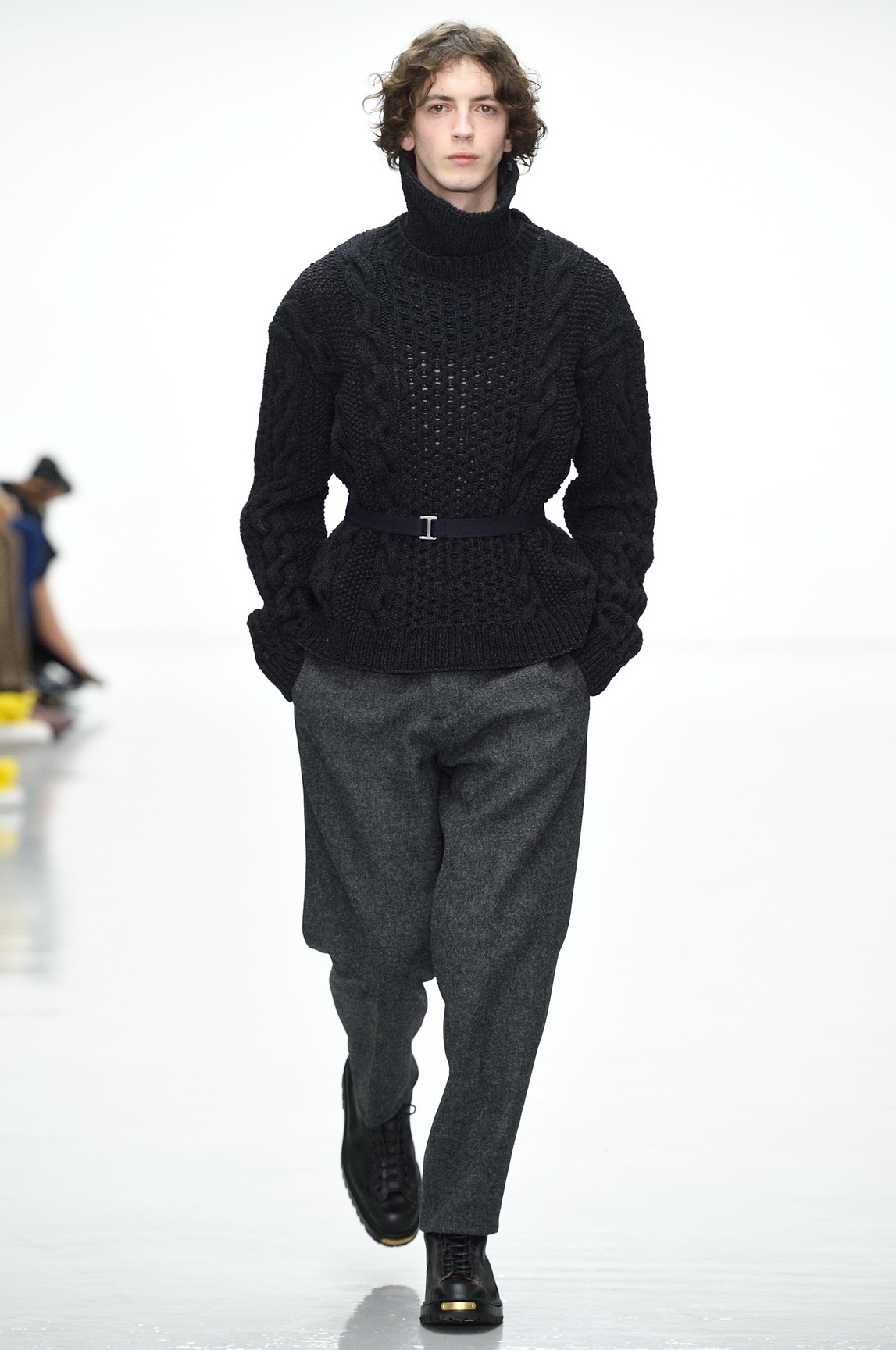
Dalton’s uniforms were the non-army workwear kind, which were then effectively imbued with military character in the idea of the civilian taking matters into his own hands. (A furry, fuzzy teddy bear trouser was absolutely irresistible.) “It all came from this struggle everyone’s been having in fashion,” Sam Cotton said after the Agi & Sam show, which saw the duo strip down their aesthetic to a core of formalized utilitarian pieces. “It started with what’s happened with Raf,” he continued, referring to Raf Simons’ recent departure from Dior and his comments on the pressure the industry puts on its designers. “We started thinking about how everyone’s going through the same struggle at the same time. We wanted to sit back and reflect what we’d done and what we’d been strongest in, and try to put implement on that rather than trying to second-guess what everyone else wants.”

There was something humble and honest about Agi & Sam’s collection, which put emphasis on fabrications and perfecting pieces rather than trying to reinvent the wheel. But it was more than that. “It’s trying to mirror everything around us,” Agi Mdumulla explained. “There’s been so much turmoil in everyone’s lives — whether it’s politics or the news, and you read the paper and it’s just doom and gloom — that it’s a reaction towards all that. 2015 was quite an intense year and there’s a lot of restriction and tension. It’s trying to make everything come together a little bit more, and looking at East and West and trying to combine those two worlds.” One pole was represented by kaftan-length tops and boxy trousers; the other, by army green multi-pocket coats that could have come out of a post-Soviet military surplus store in Berlin.
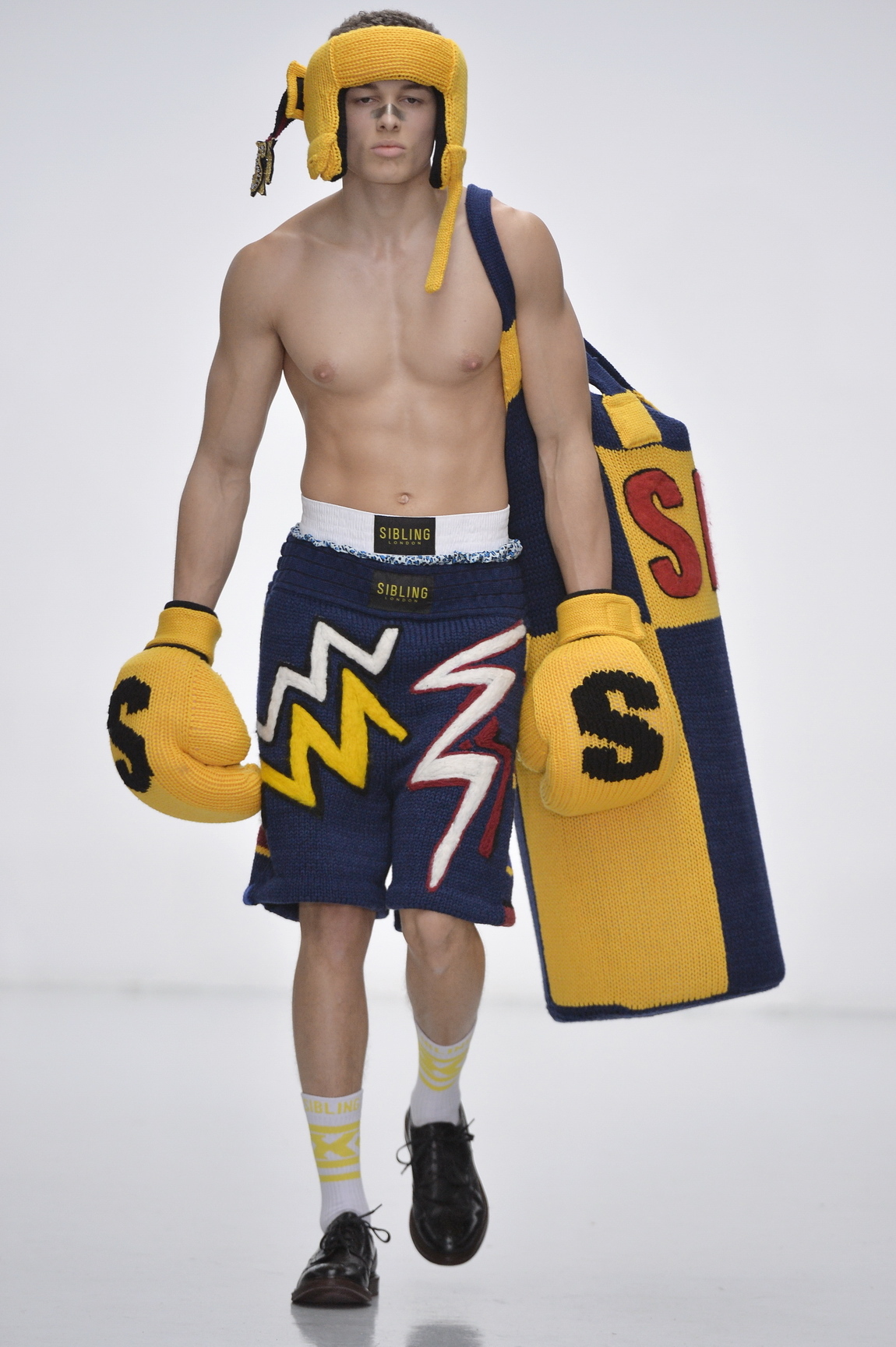
Sibling’s call to battle could never have been of the war-mongering kind. Instead, Cozette McCreery and Sid Bryan approached the military theme via boxing—more specially, the famous picture of Jean-Michel Basquiat and Andy Warhol in boxing gloves, crossing their arms over their chests in a gesture of pacifism. 85 golden hand-made military decorations adorned the show, painstakingly hand-punched with loads of Swarovski crystals. This was an army of peace true to Sibling tradition, but the inclusion of “Under Pressure” and “Another One Bites the Dust” on the show’s soundtrack couldn’t help but add a somber undertone to the impressive optimism. It was only last summer that Bryan’s husband and Sibling co-founder, the amazing Joe Bates, died. Backstage, Bryan was asked if the mood was about going into a fight. “Maybe after a fight,” he said. “It was all going to be black and dark, dark navy, but… I can’t do that. So it just grew.”
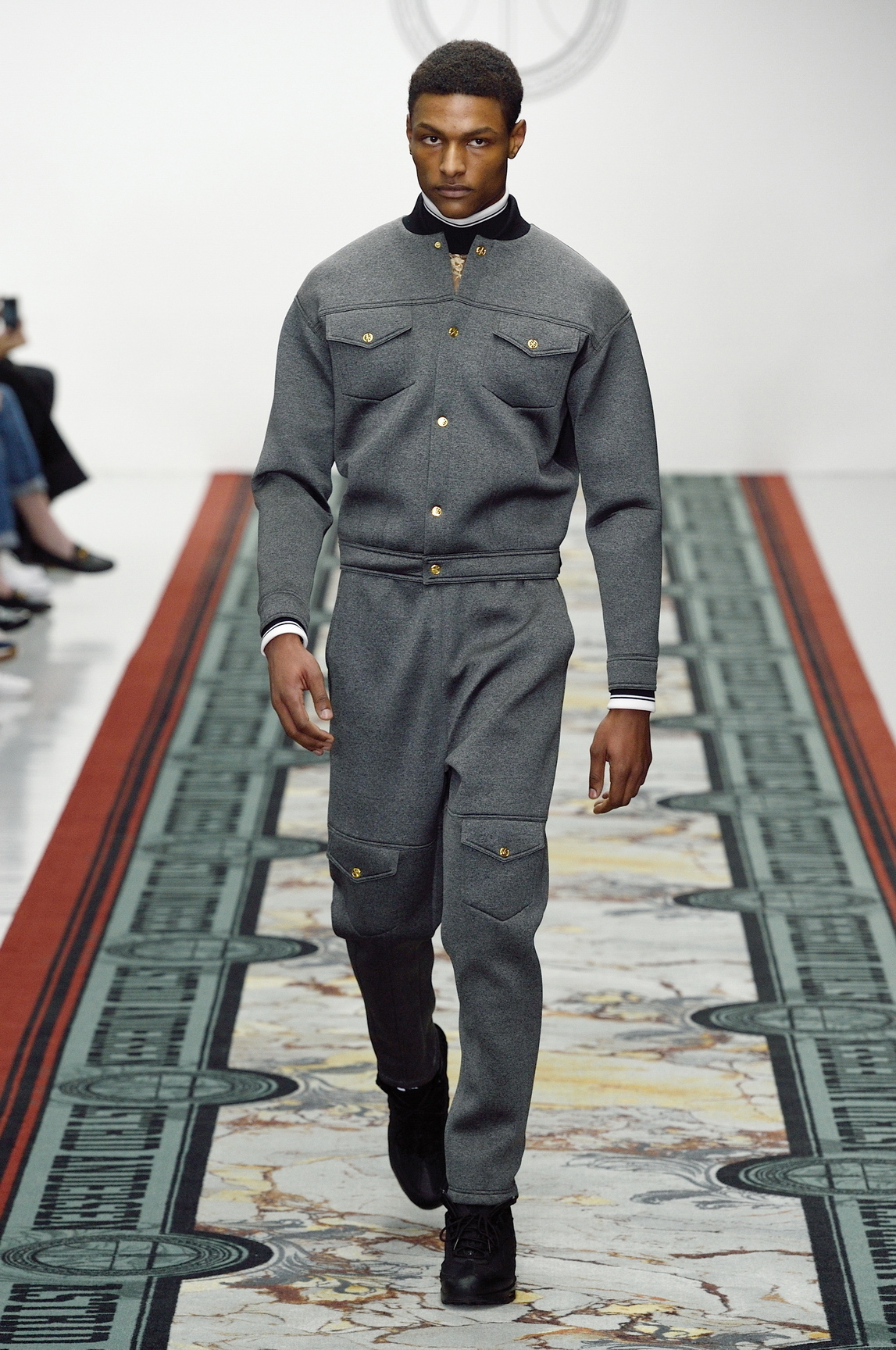
Elsewhere on the London runways, the mood that fed the season’s early penchant for a military reference generated a sense of ceremony and decorum expressed in the formal. Astrid Andersen took a departure from the oriental influences, which have ruled her work for seasons, and let intuition guide her. “The silhouette was based on the denim jacket, but then we did it in neoprene and all of a sudden it felt quite formal. But I still thought it tied in with my aesthetic, and the best thing is when I discover a silhouette that feels natural to me but still feels like a progression. It felt more formal, but it was just done in neoprene so he could do what he needed to do,” she said. What she meant was that her type of formal still happens within the frames of sportswear, but there was a tailored quality to it that made all the difference.
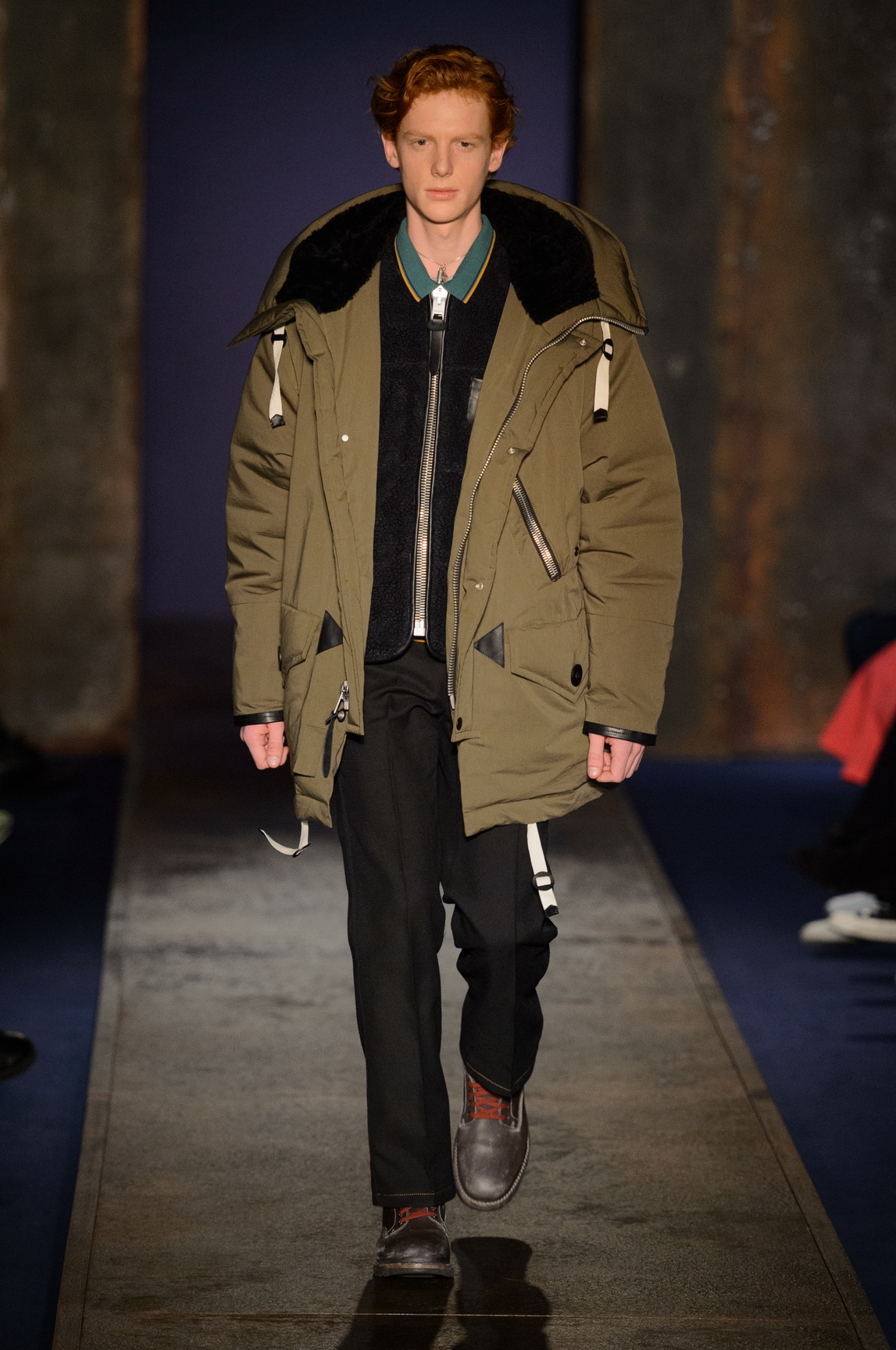
Andersen’s message was intuition, and she echoed the sentiment of her designer peers to follow your instinct and choose your battles—most obviously in the brilliant soundtrack, Janet Jackson’s “The Velvet Rope.” “It’s my belief that we all have a need to feel special,” Jackson says in the interlude to the song. “This need can bring out the best of us, yet the worst of us.” In Andersen’s words, “That album has something very personal to say to everybody who bought it in the late 90s.”
At Coach, Stuart Vevers was channelling his nostalgia into something else. “I’m trying to look at what the next generation is about and to me that’s not formality, that’s being a bit looser,” he said after the show, which followed troop on last fall/winter’s terrific teddy bear coats, shearling numbers, and leather jackets, but with added 70s pizzazz.
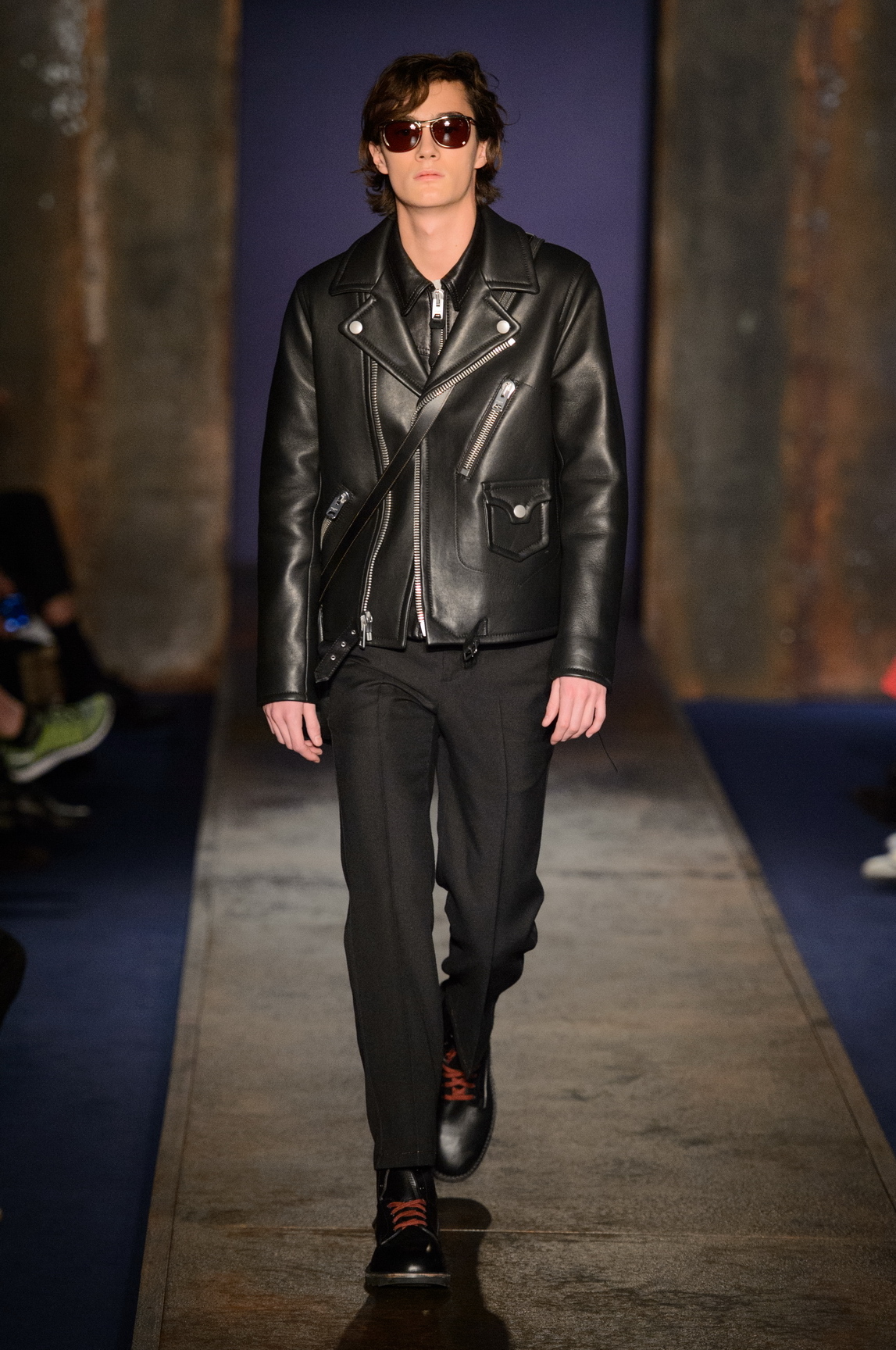
Coach wasn’t loaded with the angst of many of the other brands showing on the Saturday of London Collections: Men, but then Coach isn’t a European brand and therefore isn’t exposed to the situation currently happening on the continent the way most London designers are. “It’s quite good being an American brand to explore that,” Vevers said of the collection’s looseness. “This wasn’t an army of people with the same proportion or attitude. It’s not about precision. I spent twenty years in that European luxury fashion world, and this is an opportunity to do something different. For an American brand it should be different.”
Credits
Text Anders Christian Madsen
Backstage photography Jason Lloyd Evans
Catwalk photography Mitchell Sams
